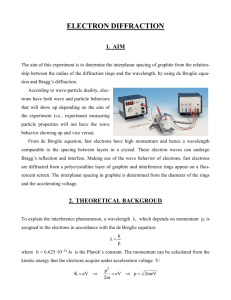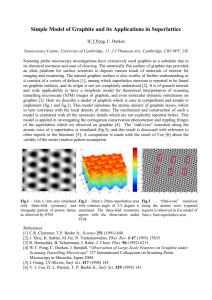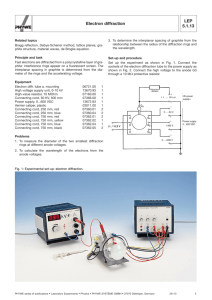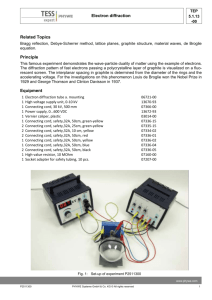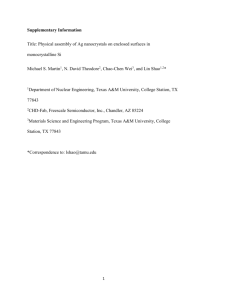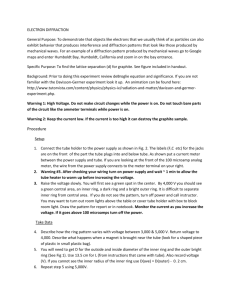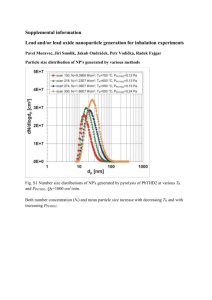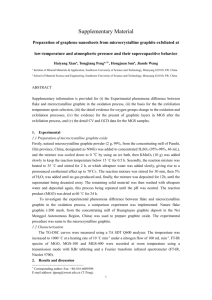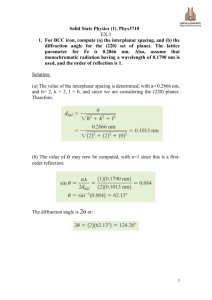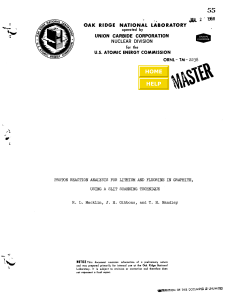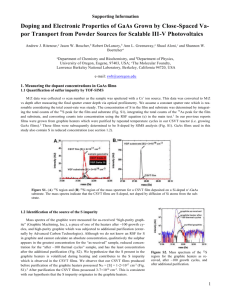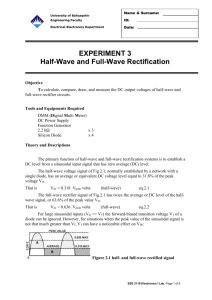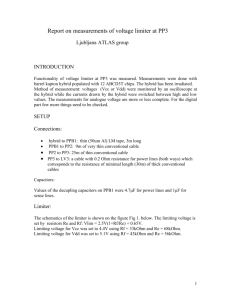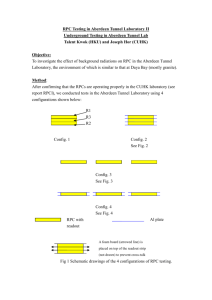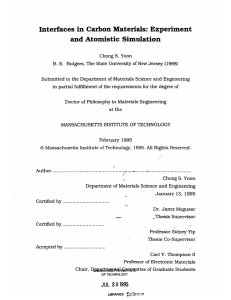18-ElectronDiffraction
advertisement
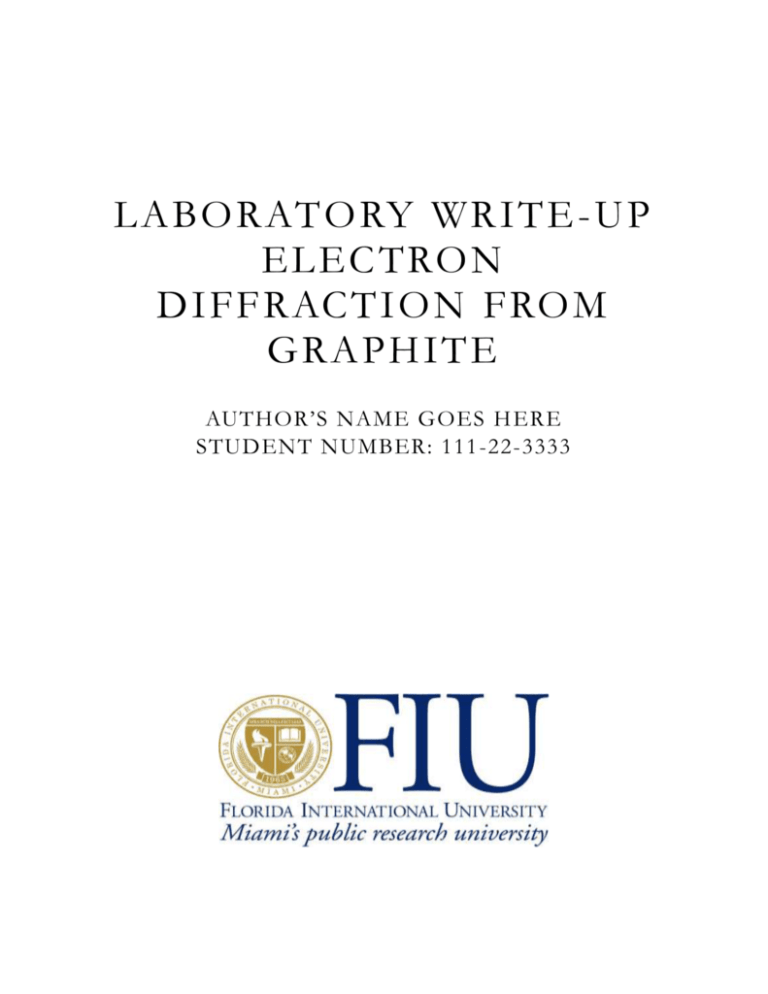
LA BO RATORY WR I TE -U P E L E C TRO N D I FFRAC TION FROM G R A PH I TE AUTHOR’S NAME GOES H ERE STUDENT NUMBER: 111 -22-3333 E L E C T R O N D I F F R AC T I O N F R O M GRAPHITE 1 . P U R P OS E In 1923, in his doctoral dissertation, Louis de Broglie proposed that all forms of matter have wave as well as particle properties, just like light. The wavelength, , of a particle, such as an electron, is related to its momentum, p, by the same relationship as for a photon: = h/p ....................(1) where h is Planck's constant. The wave properties of electrons are illustrated in this experiment by the interference, which results when they are scattered from successive planes of atoms in a target composed of graphite microcrystals. The spacing between successive planes is obtainable from the interference pattern. For a single crystal, strong reflection of waves occurs when the Bragg condition is met: 2dsin = n (n = 1,2,etc) ...(2) Fig. 1 Diffraction from a single crystal This is illustrated in Fig. 1. In the graphite target, there are very many perfect microcrystals randomly oriented to one another. Therefore the strongly emerging beam will be of a conical shape of half-angle 2 as shown in Fig. 2. If this beam falls on a phosphor-coated screen, rings of light will be formed. 2 Fig. 2 Diffraction from a large number of microcrystals Fig. 3 Electron diffraction apparatus 3 The apparatus is shown in Fig. 3. Electrons emitted by thermionic emission from a heated filament (the cathode) are accelerated towards the graphite target (the anode) by a potential difference, Va. Their kinetic energy, K, on reaching the target is equal to their loss of potential energy: K (= p2/2m) = eVa ..............(3) From equations (1) and (3), = h/(2meVa), or (nm) = 1.228/Va ..............(4) 2 . P R OC E D U R E Connect the power supplies and milli-ammeter to the vacuum tube as shown in Fig. 3. HAVE THE CIRCUIT CHECKED BY YOUR INSTRUCTOR BEFORE TURNING ANYTHING ON. Adjust the voltage controls on the power supplies to zero and then turn them on. Wait a few minutes for the filament to warm up. Set the focusing/intensity voltage to 30 V and then slowly increase the accelerating voltage to 3 kV. Monitor the electron beam current to ensure that it never exceeds 0.2 mA. A bright central spot and two rings should be observable on the screen. The rings are due to first order (n = 1) diffraction from two different sets of atomic planes having different spacings. Adjust the focusing/intensity voltage until the rings are as sharply defined as possible and then measure their diameters. Obtain sets of values of D for different accelerating voltages, Va, over as wide a range as possible, but not exceeding 5 kV. For each voltage, re-adjust the focusing/intensity voltage as necessary. For each ring diameter, D, the corresponding value of [equation (2)] may be obtained from the tube geometry. This is shown in Fig. 4. Fig. 4 Vacuum tube geometry 4 3 . C A L C U L A T I ON S The value of is given by tan 2 = (D/2)/[L-R+(R2-D2/4)] Now the radius of curvature, R, of the tube screen is 6.25 cm, and the distance, L, from the graphite target to the screen is 13.7 cm. = 0.5 arc tan [D /14.9+(156.3-D2)] .........(5) In equation 5, D is in cm. Prepare a table like the one below and from it produce graphs of (ordinate) vs. sin (abscissa) for both rings. From the slopes of the graphs determine the average values of the spacing between the two sets of atomic planes for graphite that are exploited in this experiment. Determine also the errors in these quantities. Va (eqn 4) D1 D2 (eqn 5) 2 (eqn 5) sin sin2 In graphite, layers of carbon atoms like the one shown in Fig. 5 are superimposed on top of one another. The interatomic distance is 0.142 nm and all bond angles are 120o. The sets of atomic planes exploited in this experiment are indicated. Calculate the spacing between adjacent planes for each set and compare with your results. Fig. 5 Structure of graphite 5
